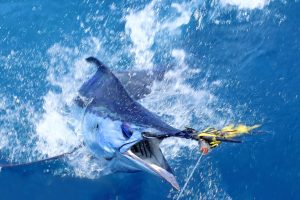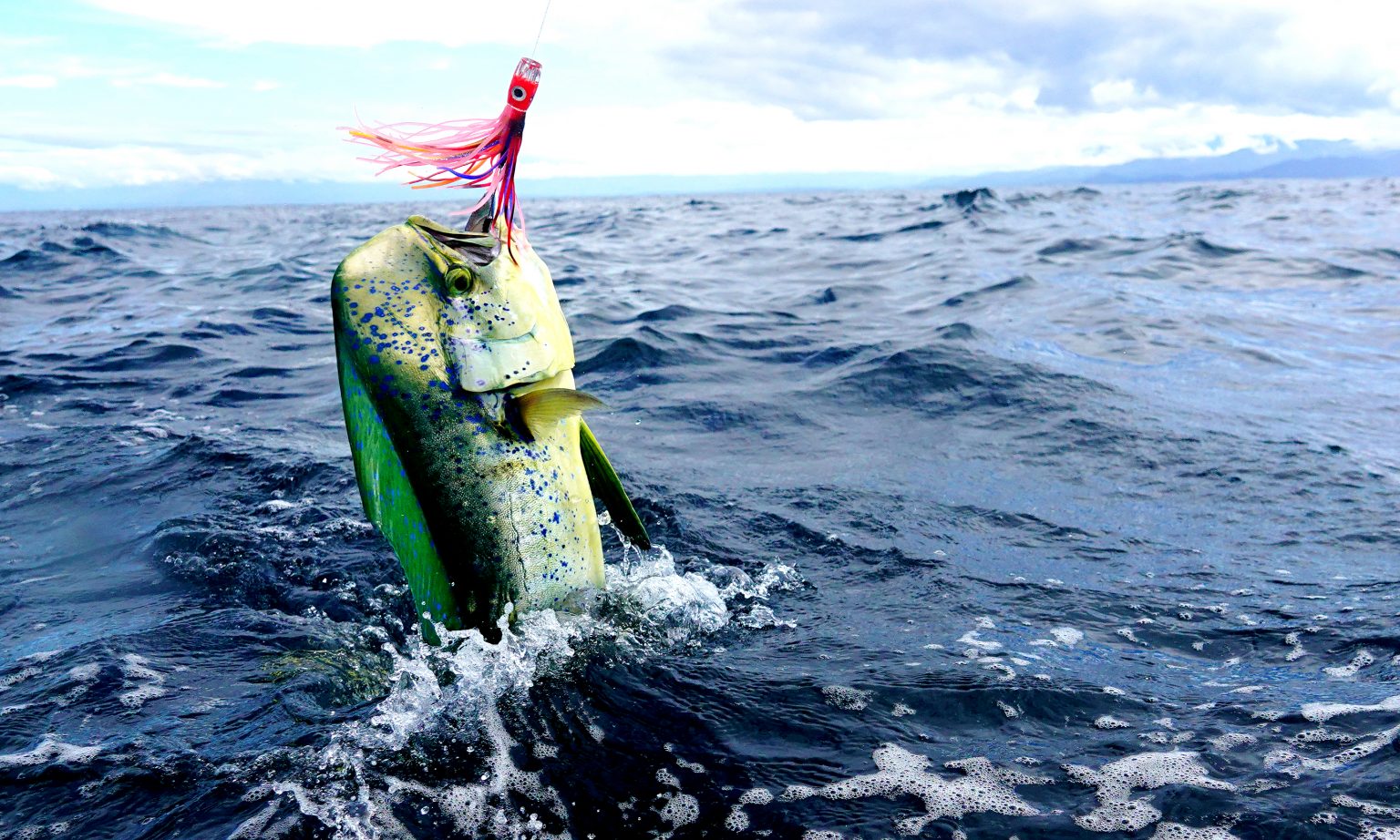Article Courtesy: coastalcarolinafisherman.com | Originally Published: 9/3/2021 | Click here for original article
Why Do Fish Change Color? You May Be Amazed With the Answer
To anglers, we are ultimately amazed when a Blue Marlin is all “lit-up” with glorious blue/purple stripes when she attacks the baits. Two minutes later, after a hookup, she goes airborne—no stripes just a dark back, a golden mid-center, and a white belly. Wow! What a damn color change. It’s also not surprising for a Flounder to be almost black sitting on muddy sediment to morph almost immediately into a light-colored critter with geo-corrected spots when this great fish moves to a light sandy, scattered shell bottom. Totally impressive habitat adjustment.
The marine world is abundant with color and it’s dynamic from the smallest of crustaceans to the largest pelagic gamefish at the top of the food chain. There is interesting speculation why there is so much color; why they have color and why they change them, and how they do it. It’s an extremely complex world of color that science somewhat knows about and some things that we don’t fully understand. Here are a few basic factors and speculations that might give us a greater appreciation for all this beauty we angler’s witness offshore with every trip:
- Most marine life shows vibrant colors to achieve a single goal or multiple goals. This may be related to a spawning enhancement, a way to camouflage from predators to eat or not be eaten, a means to show dominance or a way to show predators that I am the creature that’s toxic so beware!!! This is true of not only pelagic gamefish, but also baitfish, marine invertebrates, bottom fish, and live bottom habitat species such as corals and sponges.
 The color regimes of common gamefish such as Marlin, Tuna, Wahoo, and Dolphin and their ability to change color are related to a skin pigment called “Pneumatophores”. These are cells that create and change pigment colors based on a source of stimuli. The color at a given time or a change in coloration is believed to be mostly a stimulus from eyesight. It can also be produced by everything from fear to excitement to water depth pressure, habitat conditions, water clarity, spawning seasons, and many other factors. Light penetration must be important too with depth from scattered light. Literally, some are OK(I get it) and others are the wow factor—the speculation factor. From the surface to the darker depths down several hundred feet must be an ever adjustment for their desired goals.
The color regimes of common gamefish such as Marlin, Tuna, Wahoo, and Dolphin and their ability to change color are related to a skin pigment called “Pneumatophores”. These are cells that create and change pigment colors based on a source of stimuli. The color at a given time or a change in coloration is believed to be mostly a stimulus from eyesight. It can also be produced by everything from fear to excitement to water depth pressure, habitat conditions, water clarity, spawning seasons, and many other factors. Light penetration must be important too with depth from scattered light. Literally, some are OK(I get it) and others are the wow factor—the speculation factor. From the surface to the darker depths down several hundred feet must be an ever adjustment for their desired goals.- No doubt that some species, such as the Mahi, have habitat relations that affect their beauty and color. I don’t think any angler would doubt that the Dolphin color is closely related to the Sargassum weed that is so closely related to their life history. The Spiney Lobster, The Black Sea Bass, and the Scamp Grouper’s coloration is not only beautiful but mirrors their habitat preference on live bottom and rocky limestone. I also suspect that the vertical stripes and spectacular color mechanisms of all Billfish and Wahoo would be related to their hunting various depths and habitat columns as they work the 100-fathom break and the water regimes in the gulf stream. I find it interesting that whole groups of schooling fish, whether baitfish as prey or Tuna as predators, can take on color-coordination as a group, both working individually and in tandem in the hundreds. Amazing!
The next time you catch any species from the estuarine habitat or the gulf stream, take detailed photos to show your kids and guests. Show them the beauty of God’s blessings in true color. Ask what this color may show. Perhaps you can help science with some answers.
As with most marine phenomena, we simply admire and speculate. That’s why we are so passionate about saltwater fishing! You must be there to appreciate the beauty of it all of color.






